C2 PROJECT
C2 History Pages
History of Dahuichang C2 Number 4
The history of the C2s used at Dahuichang is far from clear, as discussed on the previous page. We are fairly sure that Dahuichang #4's tender was built at Harbin Forest Machinery works in January 1988, their works number 221. This is what is stamped into the worksplate carried by the tender, and we think we have a photo of the tender at Harbin when it was brand new (attached to a different locomotive).
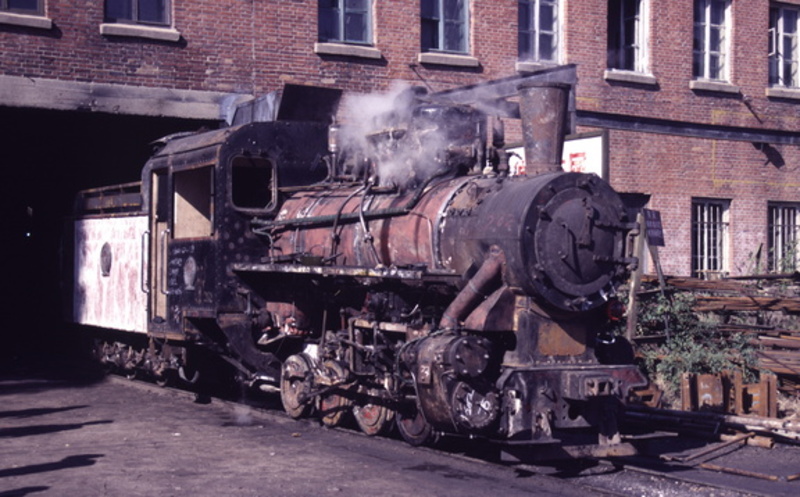
A loco numbered 202, undergoing a steam test at Harbin Forest Machinery Factory on 14th October 1987. The loco was originally built at Shijiazhuang and has received a heavy overhaul, but the tender appears brand new and may well be Harbin 221. (Photo: © Brian Pearce)
As discussed on the previous page, it now seems more likely that our loco was built at Harbin in 1983, as works number 208 or 209. It was probably originally supplied to a railway at Heihe in the far north of China as illustrated here. After that line was regauged it became redundant and would have been sold to Dahuichang around 1990.
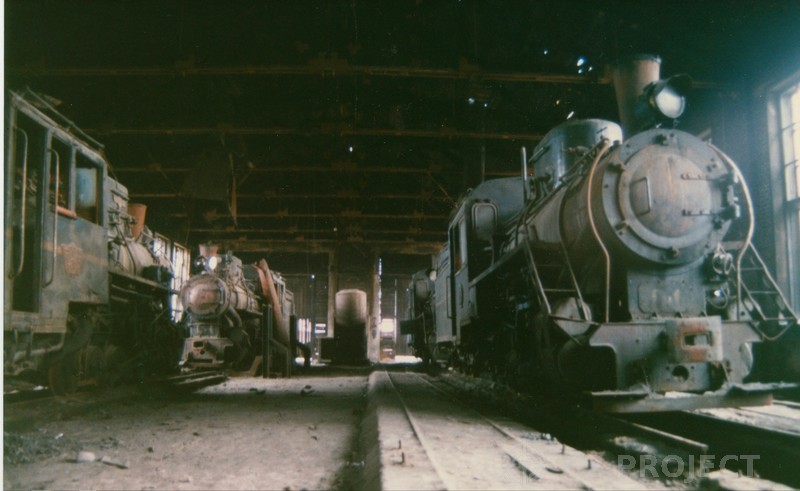
A view down the middle of the shed at Heihe showing all four 28t locos - the old Shijiazhuang-built ones on the left and the newer Harbin-built C2s on the right. We believe our loco is the one in the distance on the right-hand track. (Photo © Nick Lera)
The best evidence of Number 4's subsequent history comes from photographs, and the earliest of these we have seen dates from late 1997. If you have any photos of the C2s at Dahuichang from 1998 or earlier, we would love to see them - please get in touch.
So, to the first and earliest photographs we have seen, shown below. This dates from 31st October 1997, and we are very grateful to Bruce Evans who took the photo, and to Robin Gibbons for putting us in touch with him. Although there is no number visible, small detail differences confirm that it is our loco.
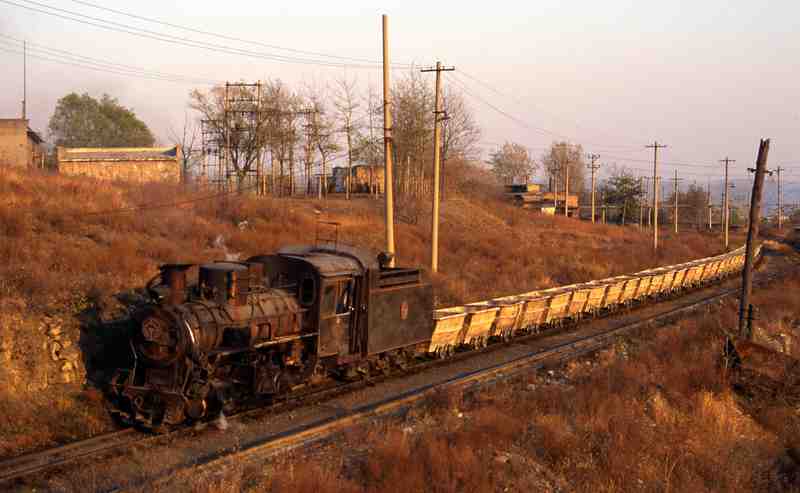
#4 working at Dahuichang on 31st October 1997. This view shows the original narrow cab (the same as on loco 01) and narrow front windows. (Photo: © Bruce Evans)
Below I have added a cropped version of the above image, and a cropped version of another slide that Bruce took a few moments earlier. I've enhanced these slightly to bring out the loco details.
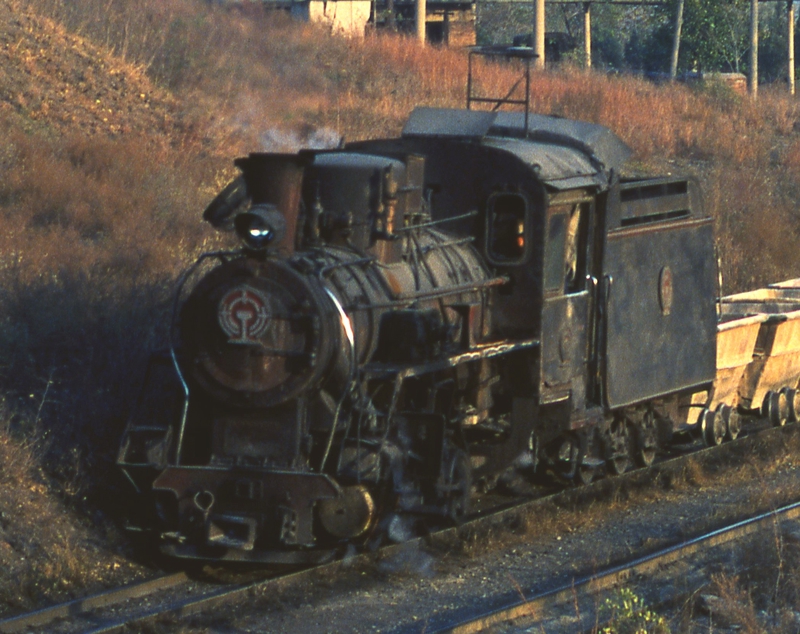
Our C2, Dahuichang #4 in 1997 with narrow cab before its major rebuild. (Photo © Bruce Evans, cropped to highlight the loco)
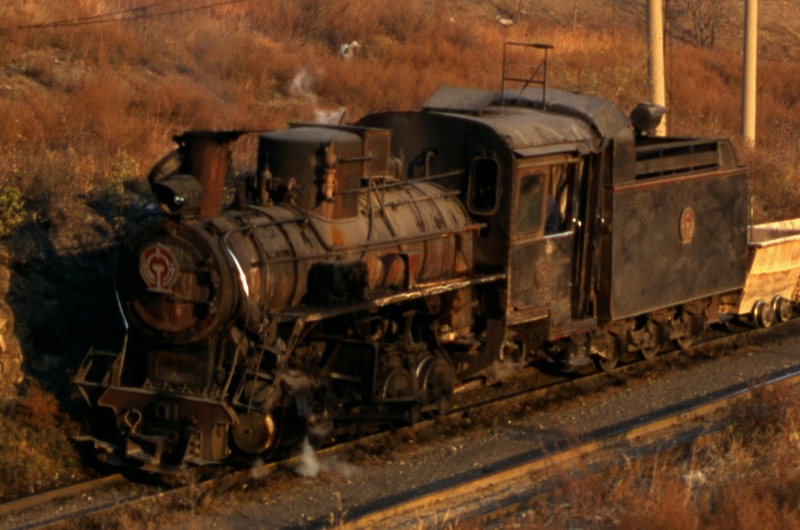
Our loco in 1997, with its original narrow cab. Our cab will be based on this shape, with narrow front windows and running board flush with the narrow cabside (Photo: © Bruce Evans, cropped to highlight loco)
The next photograph we have of #4 was taken on 15th January 1998, and we are very grateful to Rob Dickinson for sharing it with us, and for allowing us to use it here.
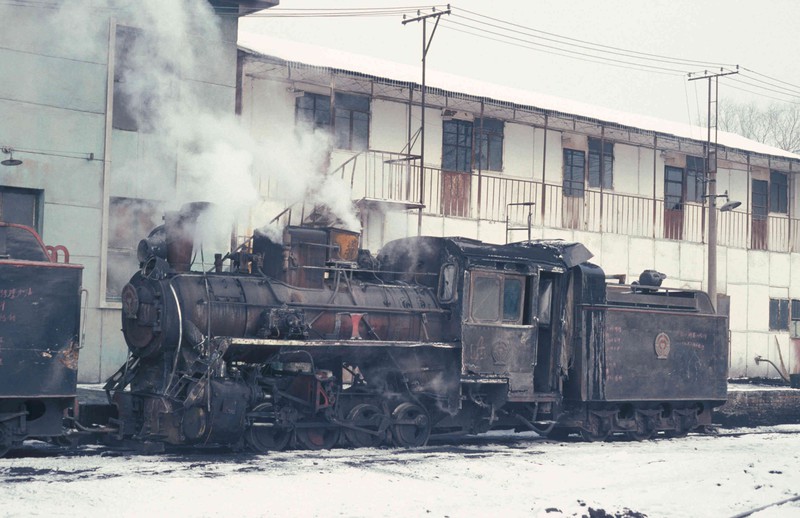
Dahuichang #4 in steam outside the offices on 15th January 1998 (Photo: © Rob Dickinson)
These three early photos are especially interesting to those of us working on #4. They show a tired, work-weary loco, as might be expected after 10 years work in an industrial environment. At first glance, the loco looks much the same as it did when we bought it, but on closer inspection there are three significant design differences:
- The cab is narrower, though of the same style as the later wide one
- There is a single blow-down valve at the front of the foundation ring instead of one either side
- The front steps to the running boards have oval slots in them
So, is it the same locomotive as the current #4? Well, there are several key consistent differences between the C2 locos (and tenders) at Dahuichang which enable them to be identified individually even if a number is not visible. These include the front coupling, the dome and sandbox details, the steps and handrails by the dome, the tender coal rails and tender forestry logo plate. These are all different on every loco. In the 1998 photo of #4 with the narrow cab, all these details are consistent with later pictures of #4, and with the #4 we have now. The ugly sandbox modification seems to be a local feature unique to Dahuichang locos, and the details of this also match our #4.
Also, on our #4, the brackets supporting the cab show clear signs of having been widened, and there is a blow-down valve flange at the front of the foundation ring which has been blanked off. The front steps seem easily damaged and have been replaced several times since 1998! These observations strongly suggest that the loco and tender in the photo above are the same one we are now rebuilding.
We will need to make the cab narrower to suit the loading gauge on the Ffestiniog Railway, so these photos give us a good precedent for such a modification, and a guide to the style we should be aiming for. Note also the red script on the tender, also seen on the adjacent loco (#3) in Rob's photo; I don't expect we will replicate that!
It appears that the loco received a major overhaul some time between January 1998 and December 1998. This would also coincide with its 10th anniversary. Brian Hawkins visited Dahuichang in October 1998 and took some nice photos of #2 and #3, but did not record the presence of #4. It had returned by December 1998 when it was reported at Dahuichang as 'clean ex-works'. Here's a photo of it at work just after Christmas 1998; thanks to Robin Gibbons. It appears clean and smart, but has lost its smoke-box-mounted forestry plate.
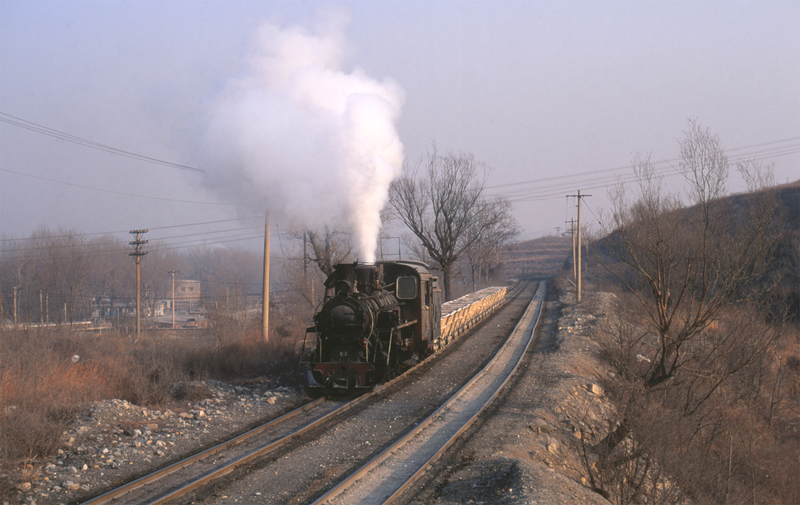
#4 storms up the hill with steam to spare on 27th December 1998. It had just come back from major overhaul at Chaihe (Photo: © Robin Gibbons)
Ted Talbot visited Chaihe Forestry Machinery Factory in January 1999. Their records indicated that they had repaired 13 C2 locomotives between April and November 1998, including one from Dahuichang. This evidence strongly suggests that our #4 was rebuilt at Chaihe in 1998.
The next photo is one of several from Nick Hanham's visit in 1999 that he has very kindly allowed us to use. The location is only a few metres from Rob Dickinson's 1998 photo, and shows the loco from a similar angle. The loco has its new wide cab and side-mounted blow down valves, but many of the unique detail features remain the same. #4 generally looks tidier than in the 1998 picture, although given the Dahuichang approach to cleaning their steam locos, the inevitable layer of grime is already concealing the modifications to the cab and the 'factory standard' paint job! The small numbers '04' are the style used by Harbin works, and by other major workshops. Dahuichang seems to have preferred to add a larger cab-side number, although the style used varied over the years.
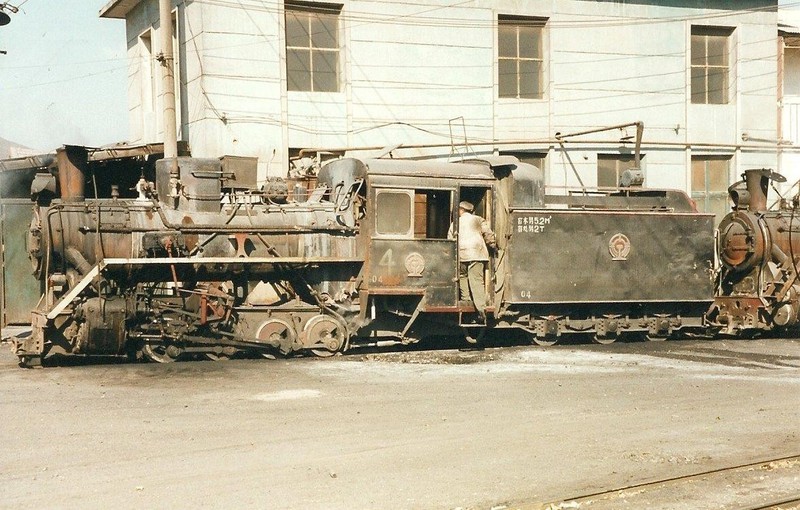
Dahuichang #4 in steam outside the offices in October 1999 (Photo: © Nick Hanham)
The three photos below are also from 1999 by Nick Hanham (thanks again) and show the loco from a variety of angles including the rarely-photographed driver's side.
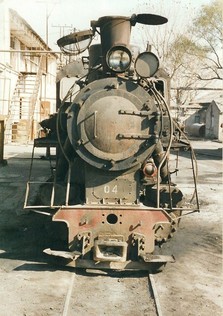
Front end of #4 in 1999, note the tail light which we intend to re-instate (Photo: © Nick Hanham)
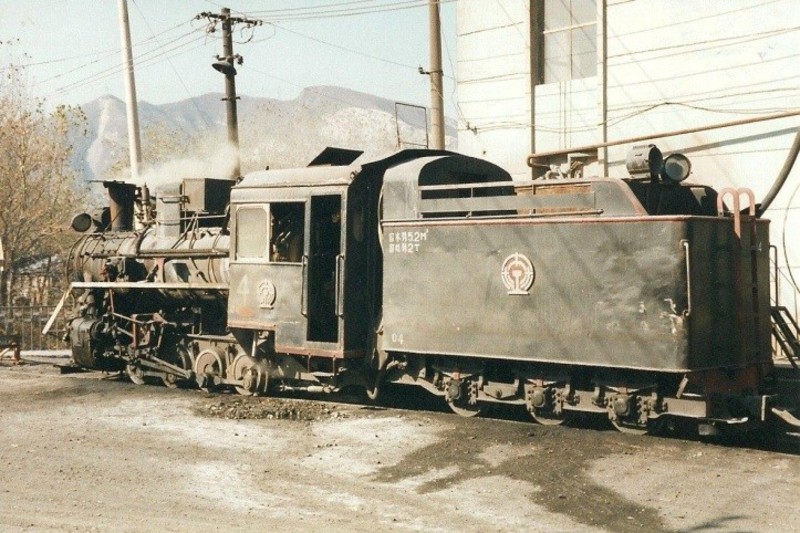
Rear view of #4 in 1999 showing the tender details (Photo: © Nick Hanham)
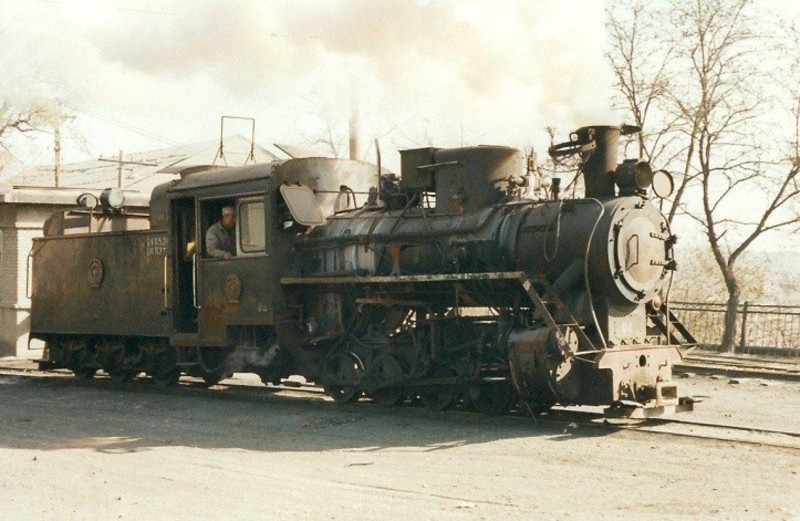
Driver's (north) side view of #4 in 1999 (Photo: © Nick Hanham)
After 1999, many more enthusiasts visited the railway at Dahuichang, so photographs are more numerous. The two below were taken by Dudley Hubbard around 1999 and I found them on his (now-vanished) fotopic site; they're so attractive I wanted to include them, but I haven't been able to trace Mr Hubbard for permission to post them here. I hope he doesn't mind. They give a good feel for operations on this short double-track line
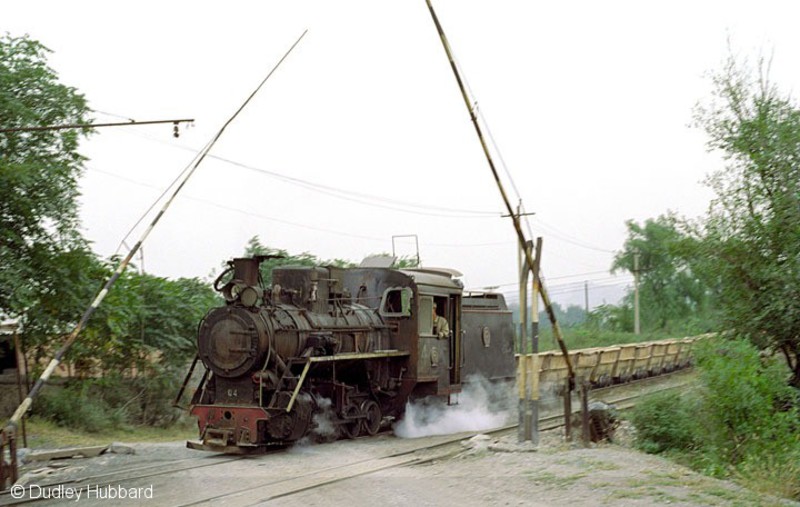
#4 hauls a rake of empties up the line, framed by the barriers at the road crossing (Photo: © Dudley Hubbard)
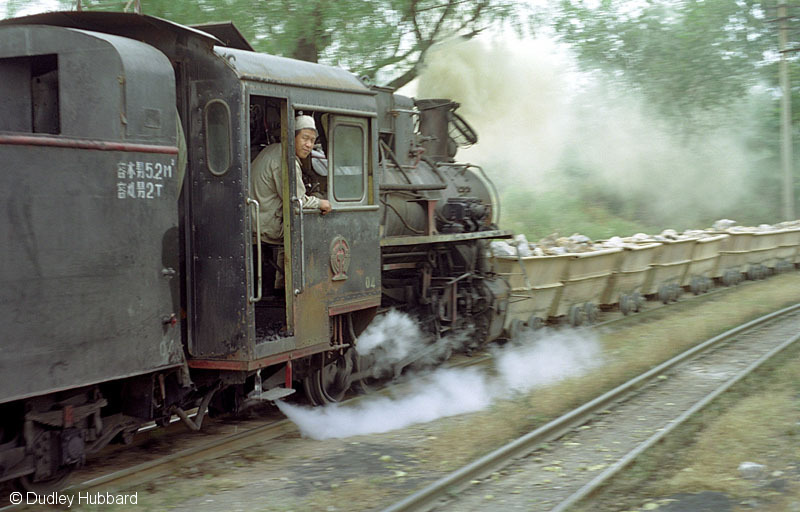
After its 1998 rebuild with a large cab, Dahuichang #4 (probably C2-208 or C2-209) brings loaded wagons back down the line - this very atmospheric shot shows the tender lettering and worksplate (C2-221). (Photo: © Dudley Hubbard)
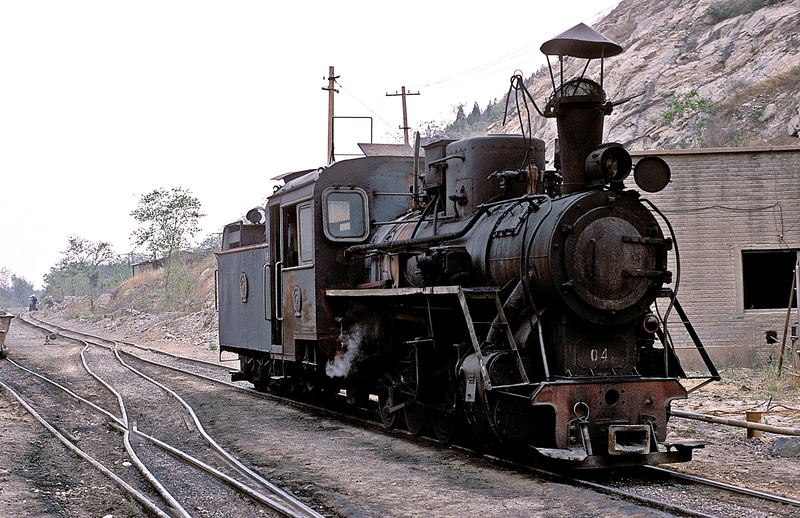
In late April 2000, #4 wore a hat! We don't know why, but our chimney still has the remnants of the brackets for this. The effect (probably unintended) was to blow the smoke downwards to obscure the driver's view. (Photo: © Hansjörg Brutzer)
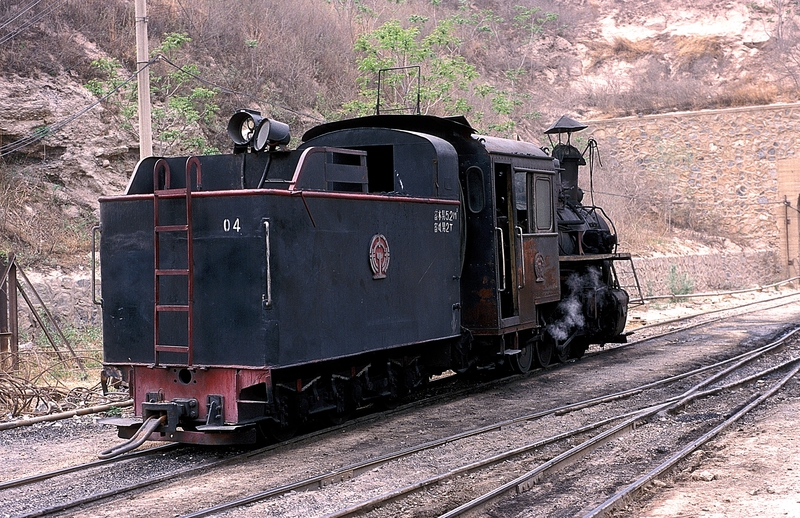
Rear 3/4 view of #4 in April 2000, showing the tender livery details (Photo: © Hansjörg Brutzer)
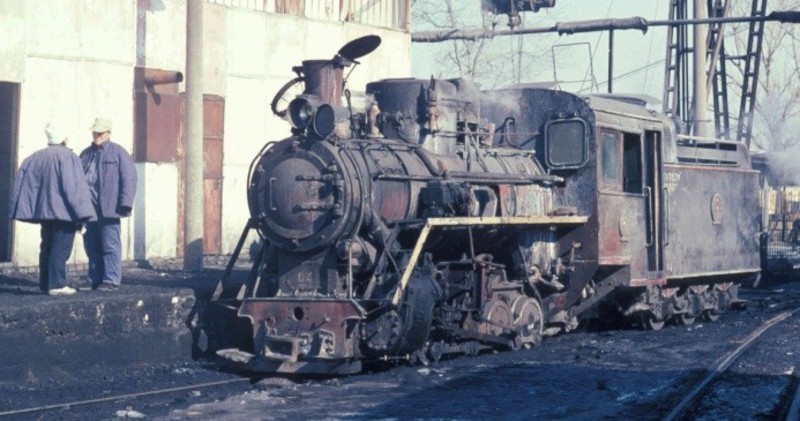
#4 at the stabling point in 2000. Note that the staff still wore uniforms at this time. (Photo: © Rob Dickinson)
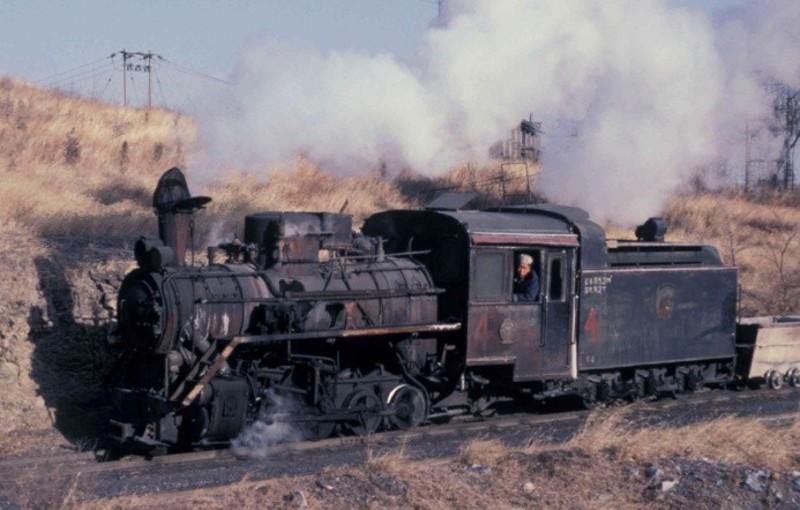
#4 hauls empties up the line in 2001 (Photo: © Rob Dickinson)
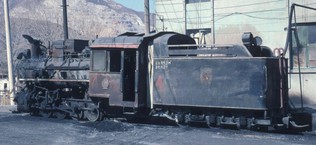
#4 at the stabling point in 2002. (Photo: © Rob Dickinson)
As shown in Rob Dickinson's photos above, by late 2001 the loco had lost at least one of the 'forestry' plates on the tender, but had gained large hand-painted numerals in red on both the cabside and tender side. The other locos also had red numerals at the time. The smaller numbering and load capacity painted on the tender remained visible. A physical alteration is the addition of extended gutters on the cab roof, painted red.
By 2004 the large numbers had been repainted even more crudely in white, appearing also on the front of the smokebox and the rear of the tender. The forestry plates on the tender had also been re-fitted, as shown in the photos below. #4 remained in this condition when the line closed in mid 2005.
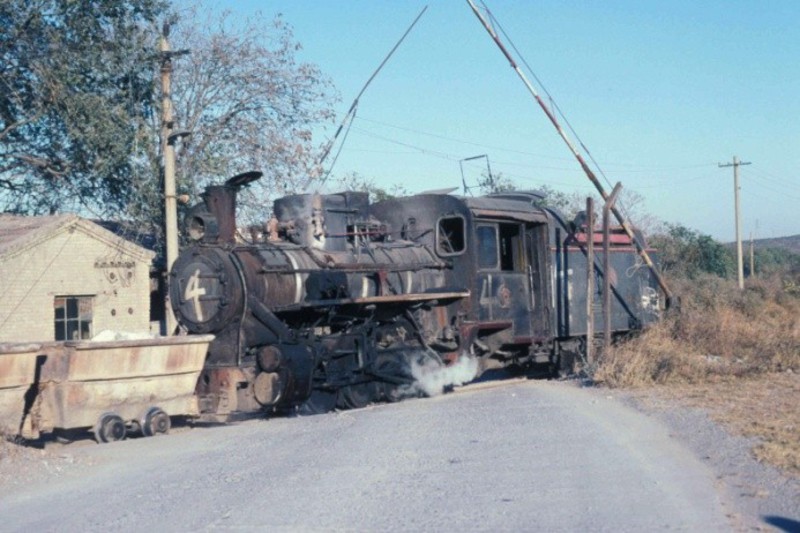
#4 crosses the road in 2004. (Photo: © Rob Dickinson)
Around the time that the line closed, #4 lost its forestry plates and the whistle was replaced with a larger cast-iron one of the type fitted to standard-gauge locos. It was in this condition that we bought the loco in 2006 (We have since acquired the original whistle and replacement forestry plates). We also had to remove some parts for shipping; the cabside handrails and some roof fittings were too big to fit in the container, for example. The final photos in this section show #4 during purchase and export; the rest of the loco's story is told elsewhere on the website...
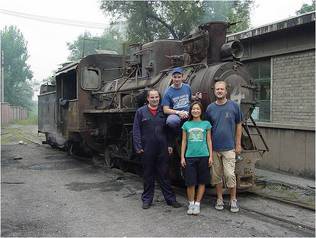
#4 in steam at Dahuichang on the occasion of our inspections in August 2006. We carried out a hot and cold exam on the boiler, examined the general condition of the rest of the locomotive, and took a test drive. Pictured are Paul and Andrew of the C2 Project Group, and Andy and Dandan Fisher who had first introduced us to Dahuichang and provided very valuable translation and negotiation skills during the purchase.
#4 at Dahuichang in October 2006, on the occasion of our final purchase and loading of the locomotive for shipping to the UK. In front of the loco are: Andrew Nelms, Andrew Fisher, Dandan Fisher, Paul Turner, Paul Molyneux-Berry, Sam Miller, Mr. Wu (Factory Manager) and Mr. Shang (Foreman).
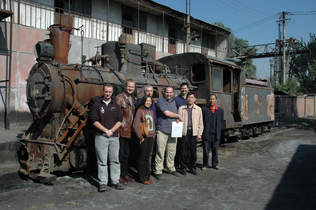
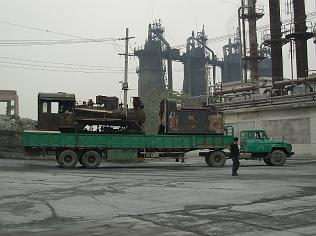
Number 4 starts its long journey to the UK, passing the Dahuichang cement plant October 2006 - PAUL TURNER
Further Reading:
Rob Dickinson's 'International Steam' webpages:
Brian Hawkins gallery of Chinese steam, including several visits to Dahuichang:
Nick Hanham's transport gallery (Chinese section), including an early visit to Dahuichang:
Werner & Hansjörg Brutzer's album of photos from Dahuichang: